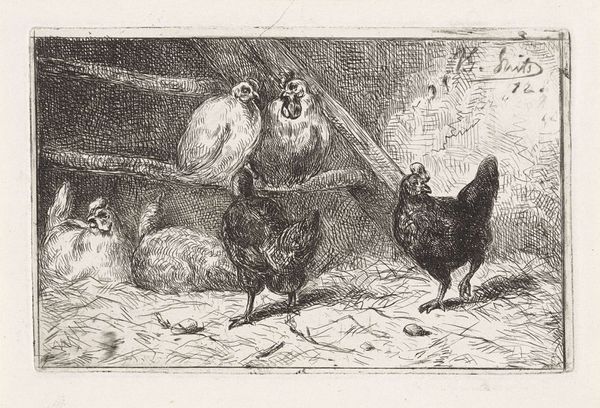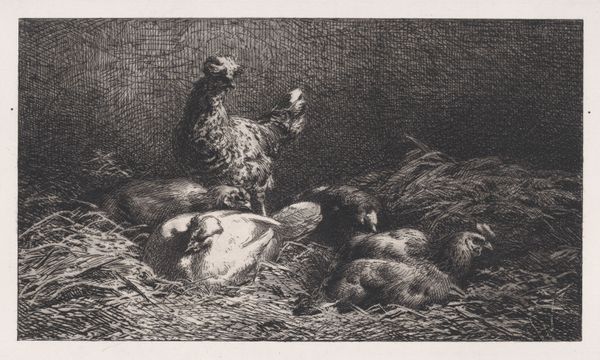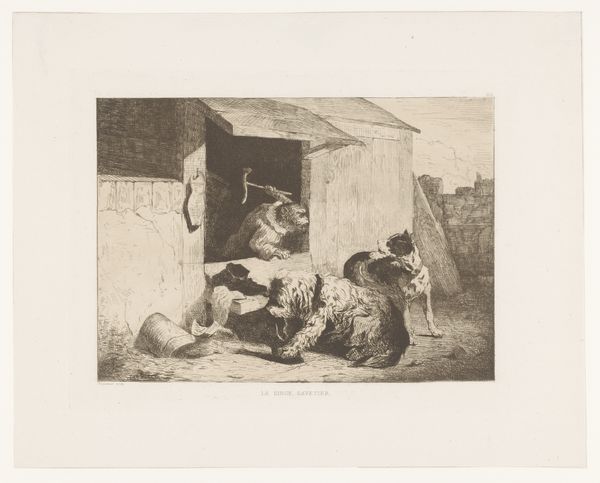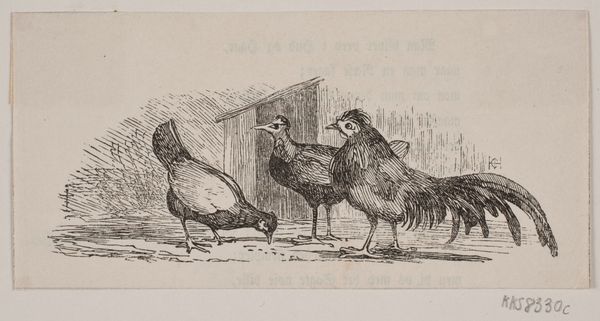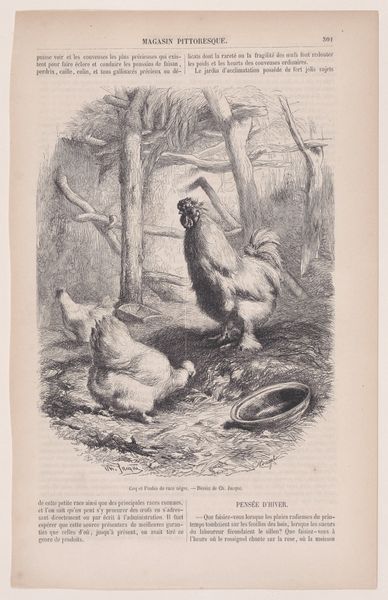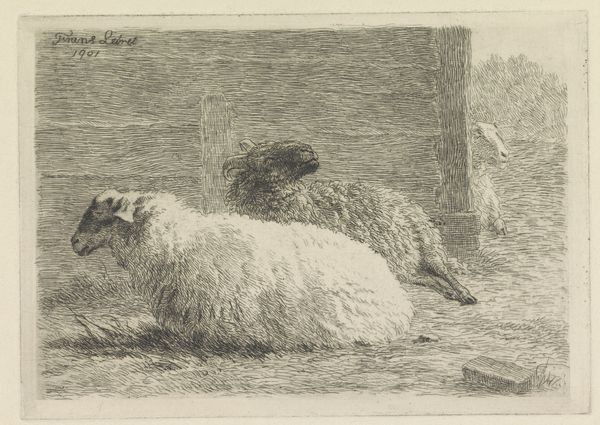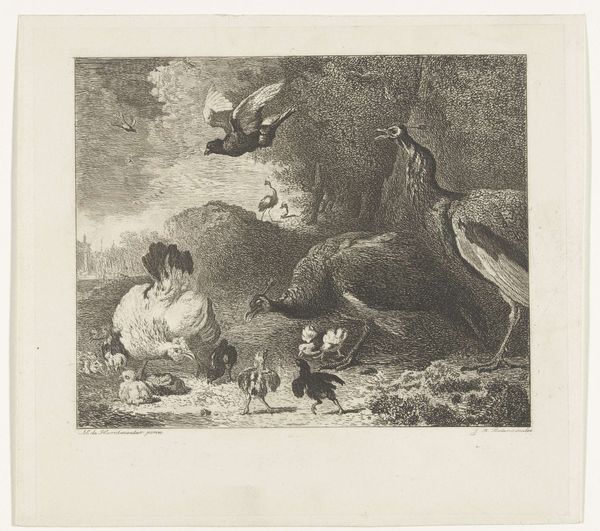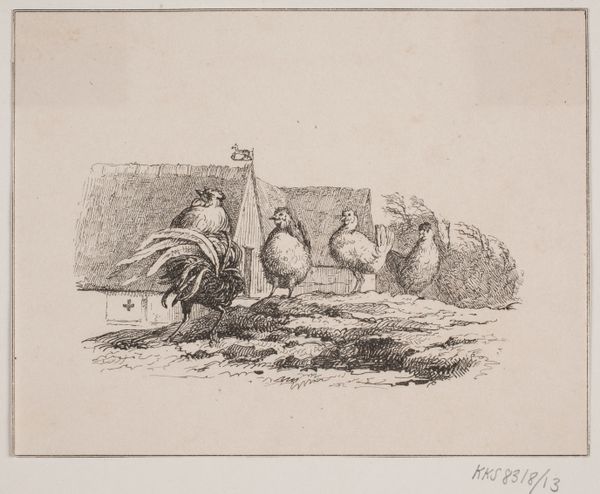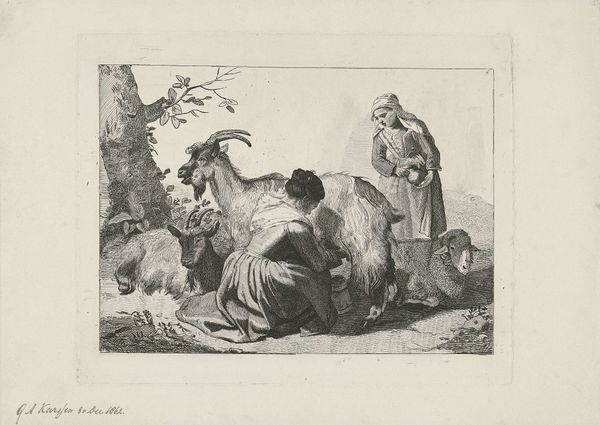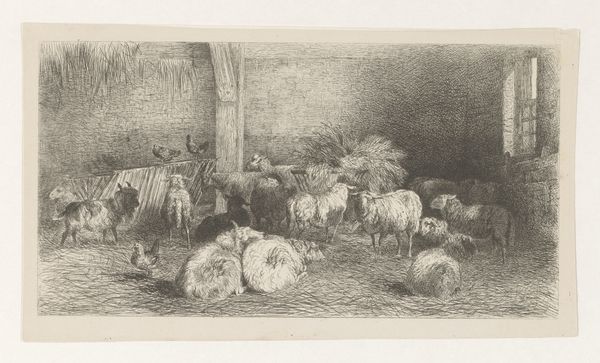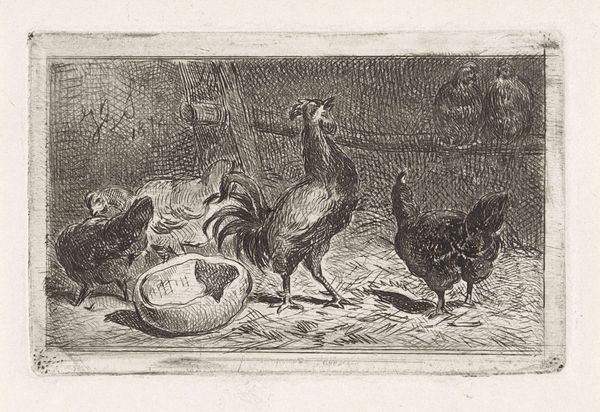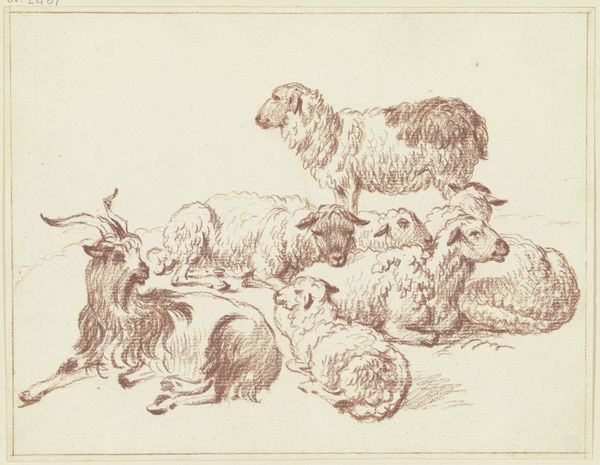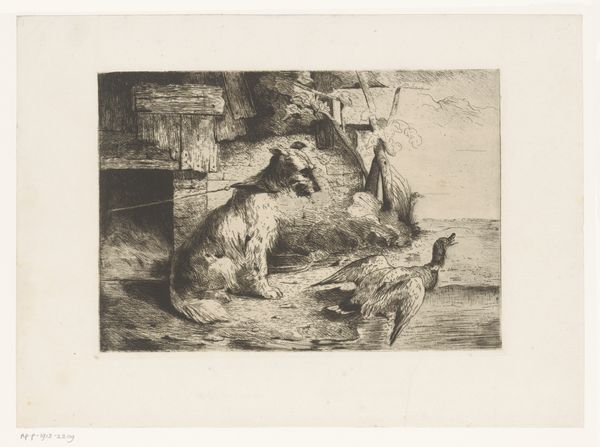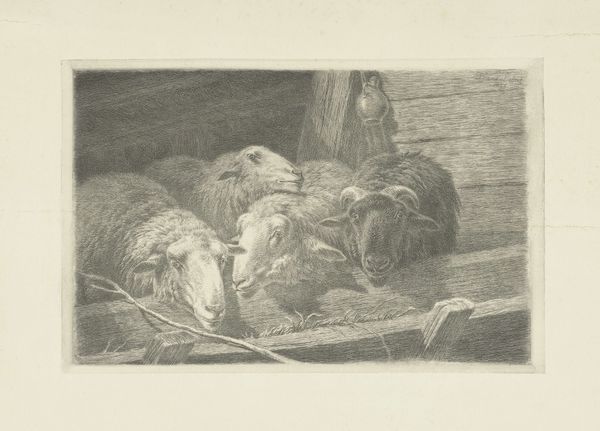
drawing, print
#
pencil drawn
#
drawing
#
amateur sketch
#
natural shape and form
#
light pencil work
# print
#
pencil sketch
#
charcoal drawing
#
charcoal art
#
pencil drawing
#
pencil work
#
remaining negative space
Dimensions: Sheet: 13 in. × 18 7/8 in. (33 × 48 cm) Plate: 6 11/16 × 7 7/8 in. (17 × 20 cm)
Copyright: Public Domain
Editor: We're looking at "Rooster and Hens," a print made by Charles Jacque in 1864. The Met tells us it's a drawing. I’m struck by how much detail he gets with what looks like just pencil or charcoal. What do you see in this piece, particularly with regards to its imagery? Curator: It is interesting to note how Jacque positions the rooster, front and center, as an almost regal figure surrounded by his court. Roosters, historically, are potent symbols of virility, pride, and even vigilance, linked to sunrise and new beginnings. Does this assertive depiction evoke any thoughts about the role of the domestic space during this period? Editor: That’s interesting, the rooster almost looks proud or confrontational. Is he supposed to represent something beyond just a farm animal? Curator: Certainly. Consider how representations of animals often become allegorical. Chickens, in a broader sense, are frequently linked to domesticity, motherhood, and nurturing. Here, their positioning around the rooster could be interpreted as an emphasis on his role as the head of the household. Perhaps, reflecting societal structures prevalent during the mid-19th century. Do you see the depiction of a sort of hierarchy? Editor: Yes, I see what you mean. The rooster is definitely the focal point and the hens seem to be clustered around him, maybe seeking protection or guidance? It feels very symbolic now that you point it out. Curator: Precisely. And beyond the primary symbolism, observe the visual language: the texture of the feathers, the positioning of each hen in relation to the rooster… It speaks volumes about social roles and expectations embedded within a seemingly simple farmyard scene, carrying forward an understanding from biblical contexts through contemporary domesticity. Editor: So, it's more than just a drawing of chickens; it's reflecting social power structures of the time through barnyard imagery. I’ll definitely think about that next time I see this. Curator: Absolutely. Visual culture allows cultural memory and societal continuity through accessible symbols for diverse interpretations over time. It makes you wonder how it’ll all be read a hundred years from now!
Comments
No comments
Be the first to comment and join the conversation on the ultimate creative platform.
